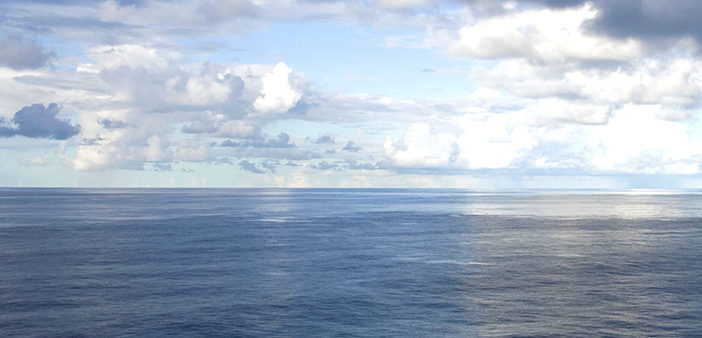Human activity increases the amount of nitrogen that reaches the oceans by 50%, on top of natural processes, according to a new report by the Joint Group of Experts on the Scientific Aspects of Marine Environmental Protection (GESAMP), assessing the magnitude and impacts of anthropogenic atmospheric nitrogen inputs to the ocean.
The study by the UN advisory body provides a new estimate of the extent that human beings are altering the cycling of nitrogen in the oceans. Extra nitrogen is reaching the oceans through rain or dust fall, as a result of fossil fuel burning and intensive agriculture.
The natural process of nitrogen fixation is essential for life. Inert nitrogen gas in the earth’s atmosphere dissolves in the ocean, where it is converted into reactive nitrogen forms used by living marine organisms as nutrients for growth and development. However, too much extra nitrogen in particular ocean areas can cause problems, such as algal blooms and the release of the greenhouse gas nitrous oxide.
[smlsubform prepend=”GET THE SAFETY4SEA IN YOUR INBOX!” showname=false emailtxt=”” emailholder=”Enter your email address” showsubmit=true submittxt=”Submit” jsthanks=false thankyou=”Thank you for subscribing to our mailing list”]
The atmospheric input of reactive forms of nitrogen to the ocean is now estimated to be almost four times that in 1850. In areas of high emissions to the atmosphere, such as in Southeast Asia, Europe and North America, human-induced increases in reactive nitrogen deposition to the ocean are proportionately higher.
The report suggests that current human nitrogen emissions may remain relatively stable on a global basis through 2050, but more research is needed, particularly in the Northwest Pacific and Northern Indian Ocean. These are areas of the oceans that currently receive high inputs of atmospheric nitrogen and where there are also likely to be substantial changes in the future, with potential impacts at regional and global scales.
Areas of the Mediterranean and North Atlantic are also candidates for further research, due to the particular nature of the additional nitrogen deposition in those areas, influenced by different levels of phosphorus and iron.
As such, GESAMP recommends additional work on:
- The sources of atmospheric organic nitrogen;
- The magnitude and significance of recycling of ammonia and organic nitrogen from the oceans;
- The parameterization of deposition, particularly dry deposition;
- An improved database, particularly on wet deposition over the oceans;
- The extent and thresholds for suppression of nitrogen fixation by ambient surface water dissolved nitrogen;
- The retention of nitrogen within shelf systems, and particularly how the rates of bacterial processes that convert fixed nitrogen back to dinitrogen gas (denitrification and the related anammox both of which convert Nr into inert nitrogen gas) vary with temperature;
- The impacts of possible change in aerosol acidity over coming decades on the atmospheric delivery of nutrients to the oceans; and
- Increasing atmospheric carbon dioxide concentrations are already driving ocean acidification and this is likely to increase in coming decades. The impacts of the changing ocean pH on ocean emissions of atmospherically important gases including nitrogen species, but also other gases, needs to be evaluated.
It also recommends further work in the following regions, which are particularly sensitive to likely changes in atmospheric deposition:
- The Northwest Pacific where deposition fluxes are expected to grow and where there may already be impacts from the current inputs;
- The Northern Indian Ocean, an important source region for N2O, which receives a large atmospheric input that is argued to already be increasing plankton productivity; and
- Areas of the Mediterranean and North Atlantic where primary production is phosphorus- or iron-limited and hence where additional nitrogen deposition may lead to different nutrient biogeochemical responses to those in other ocean areas where nitrogen is the primary limiting nutrient.
Explore more by reading the full report:





























































